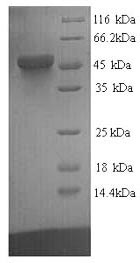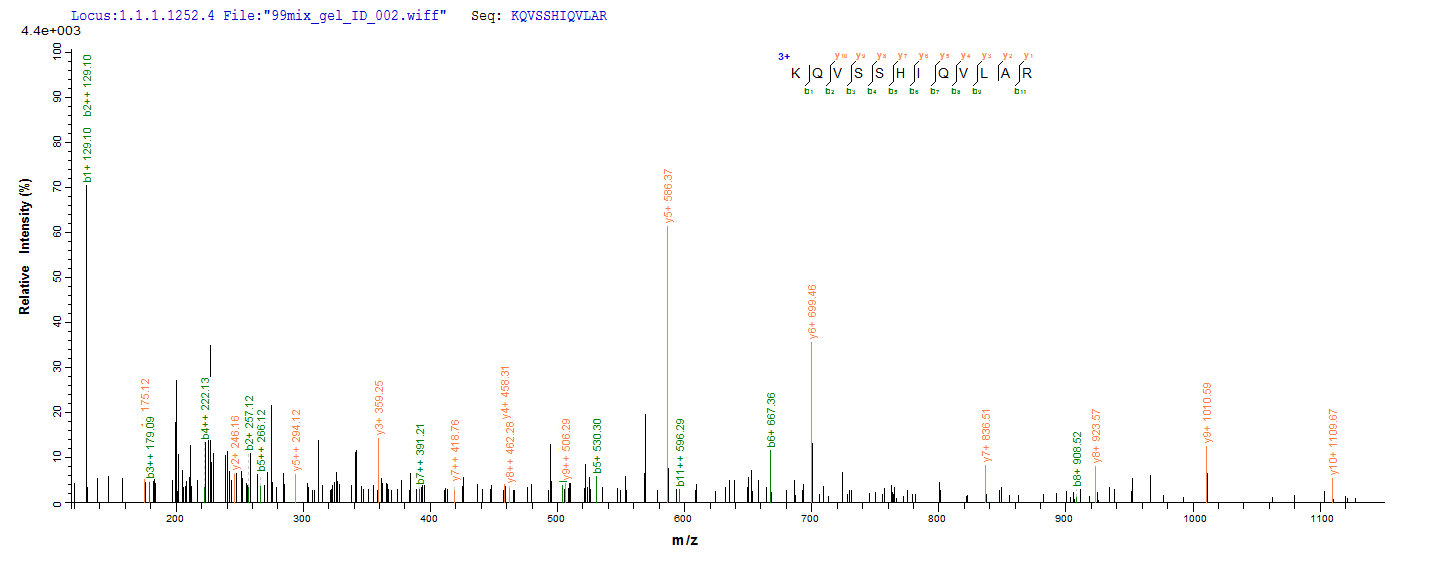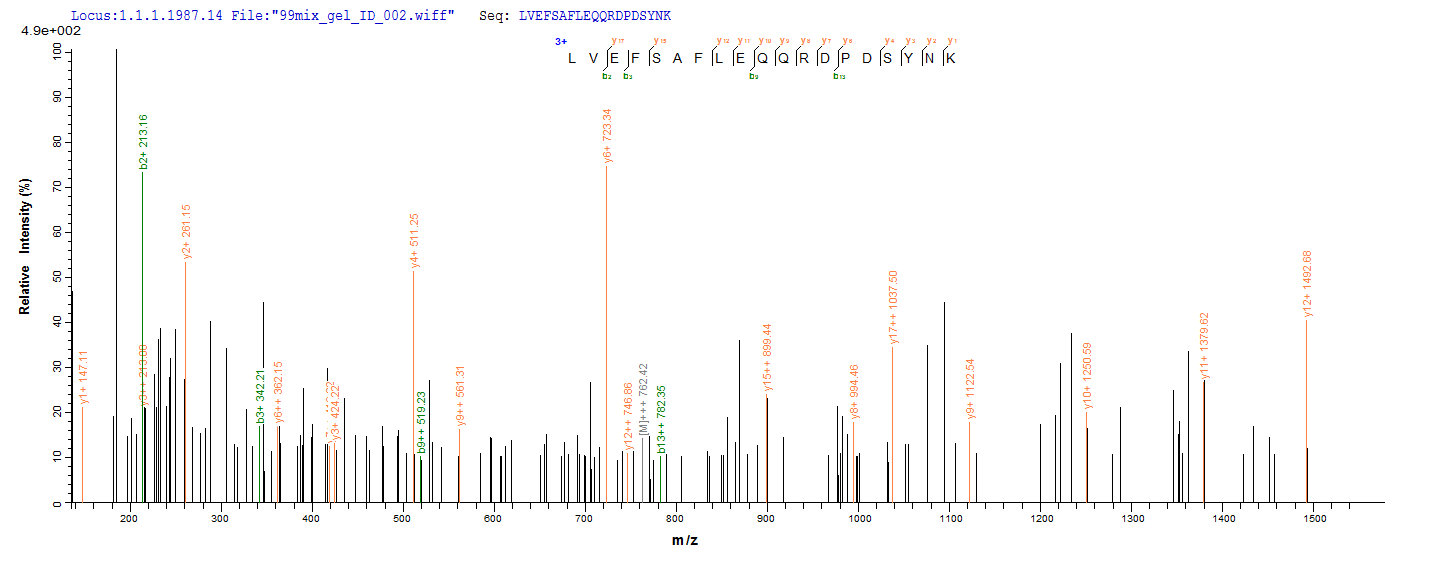Recombinant Human Transcriptional enhancer factor TEF-1 (TEAD1) is a full-length protein expressed in the yeast. It was fused with a 6xHis-tag at the N-terminus. This TEAD1 protein containing 426 amino acids was identified and validated by the LC-MS/MS Analysis. Its purity is greater than 90% as determined by SDS-PAGE. The purified TEAD1 migrated on the SDS-PAGE at a molecular mass of about 50 kDa. Because this protein is in stock, the delivery time will be relatively shortened. This recombinant TEAD1 protein may be used for antibody production and in the studies of the cardiovascular research field.
TEAD-1 is required for cardiac morphogenesis, and its relatives cannot compensate for the TEAD-1 function during embryogenesis. And TEAD-1 possesses transactivation activity on the TGF-α promoter through its specific interaction with the proximal regulatory element (PRE). This may suggest a strategy for controlling the function of TGF-α, which is frequently expressed in various cancers and is involved in the genesis and maintenance of these malignancies.








